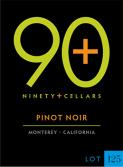WE ARE OPEN:
MON TO THUR : 9:00AM TO 9:00PM
FRI-SAT : 9:00AM TO 10:00PM
SUN: 11:00AM TO 6:00PM
-
Shop by Country
- America (29)
- Argentina (44)
- Australia (55)
- Austria (2)
- California (1)
- Canada (1)
- Chile (74)
- Cyprus (1)
- France (153)
- Georgia (3)
- Germany (15)
- Greece (3)
- Hungary (2)
- Israel (157)
- Italy (341)
- Japan (10)
- Lebanon (1)
- Moldova (1)
- New Zealand (29)
- Peru (1)
- Portugal (75)
- South Africa (27)
- Spain (117)
- Trinidad & Tobago (1)
- U.S. (1)
- United States (763)
- Uruguay (1)
- Show Less
-
Shop by Region
- California (558)
- Galilee (32)
- Mendoza (32)
- South Eastern Australia (31)
- Tuscany (53)
- Veneto (35)
- Show More
- Abruzzo (10)
- Alentejo (4)
- Alsace (7)
- Alto Adige (4)
- Bordeaux (14)
- Bordeux (3)
- Burgundy (7)
- Calatayud (5)
- California (558)
- Campo de Borja (5)
- Central Valley (4)
- Champagne (14)
- Douro (7)
- Emilia-Romagna (3)
- Galilee (32)
- Jerez (4)
- Judean Hills (14)
- Jumilla (3)
- Languedoc (5)
- Languedoc Roussillon (5)
- Lisboa (6)
- Loire Valley (7)
- Maipo Valley (7)
- Marlborough (26)
- Maule Valley (5)
- Mendoza (32)
- Mosel (3)
- Mosel-Saar-Ruwer (5)
- Napa Valley (6)
- New Jersey (10)
- New York (29)
- Oregon (19)
- Piedmont (19)
- Piemonte (5)
- Provence (3)
- Rapel Valley (3)
- Rheinhessen (4)
- Rhone Valley (10)
- Rias Baixas (4)
- Rioja (24)
- Sicily (6)
- South Australia (8)
- South Eastern Australia (31)
- Tuscany (53)
- Valle Central (4)
- Vendemmia (4)
- Veneto (35)
- Vinho Verde (4)
- Washington (30)
- Western Cape (6)
- Show Less
-
Shop by Size
- 6 pack 12oz cans (1)
- 64oz (1)
- 100ml (2)
- 12oz bottles (5)
- 20 pack cans (1)
- 100ml 4 pack (1)
- 22oz bottle (1)
- 250ml (5)
- 355ml (37)
- 355ml can (8)
- 4 pack 355ml cans (8)
- 375ml (64)
- 4 pack 12oz cans (12)
- 4 pack 250ml cans (9)
- 500ml (25)
- 6 pack 12oz bottles (2)
- 700ml (16)
- 720ml (3)
- 750ml (2962)
- 8 pack 12oz cans (9)
- 1L (23)
- 1.5L (334)
- 1.75L (24)
- 3L (8)
- 4L (11)
- 5L (3)
- Each (2)
- 12L (2)
- 1 Case (1)
- Show Less
-
Shop by Varietal
- Cabernet Sauvignon (266)
- Chardonnay (142)
- Merlot (103)
- Pinot Noir (99)
- Red Blend (184)
- Sauvignon Blanc (84)
- Show More
- Blend (24)
- Bordeaux Blend (13)
- Bordeaux Rouge (7)
- Cabernet Franc (12)
- Cabernet Sauvignon (266)
- Carmenere (9)
- Champagne (28)
- Chardonnay (142)
- Chenin Blanc (6)
- Corvina (8)
- Dessert (16)
- Garnacha (10)
- Grenache (16)
- Malbec (37)
- Marsala (6)
- Merlot (103)
- Montepulciano (11)
- Montepulciano d'Abruzzo (7)
- Moscato (56)
- Nebbiolo (7)
- Petite Sirah (8)
- Pinot Grigio (63)
- Pinot Noir (99)
- Port (15)
- Port Blend (17)
- Proprietary Blend (33)
- Proprietary Red (16)
- Prosecco (17)
- Red (25)
- Red Blend (184)
- Riesling (34)
- Rioja (10)
- Rose (39)
- Rosé (6)
- Sangiovese (35)
- Sangiovese Grosso (8)
- Sangria (15)
- Sauvignon Blanc (84)
- Sherry (14)
- Shiraz (21)
- Sparkling (18)
- Sparkling Wine (10)
- Spumante (7)
- Syrah (14)
- Tempranillo (21)
- Tinto (6)
- Vermouth (8)
- White Blend (35)
- White Zinfandel (12)
- Zinfandel (20)
- Show Less
-
Shop by Winery
- Barefoot (27)
- Beringer (18)
- Concha y Toro (19)
- Kedem (31)
- Sutter Home (21)
- Yellow Tail (21)
- Show More
- 19 Crimes (7)
- André (5)
- Antinori (4)
- Apothic (6)
- Barefoot (27)
- Barefoot Cellars (5)
- Barkan (10)
- Baron Herzog (11)
- Bartenura (10)
- Beringer (18)
- Binyamina (6)
- Bogle (7)
- Bolla (12)
- Cantina Gabriele (9)
- Carlo Rossi (16)
- Carmel (5)
- Cavit (15)
- Chateau Ste. Michelle (6)
- Clos du Bois (6)
- Concha y Toro (19)
- Domaine Lafage (5)
- Five Stones Vineyard (5)
- Folie à Deux (5)
- Francis Coppola (5)
- Herzog (7)
- Il Conte (5)
- J Vineyards & Winery (5)
- Joseph Carr (7)
- KWV (14)
- Kedem (31)
- Kendall-Jackson (7)
- Korbel (6)
- Liberty Creek (6)
- Lindemans (8)
- Manischewitz (5)
- Mony (11)
- Moët & Chandon (5)
- Papi (7)
- Recanati (5)
- Ruffino (8)
- Sterling (9)
- Sutter Home (21)
- Tavernello (4)
- Teperberg (11)
- The Little Penguin (6)
- Tomasello (8)
- Villa Jolanda (7)
- Woodbridge by Robert Mondavi (11)
- Yarden (5)
- Yellow Tail (21)
- Show Less
- Shop by Year
- Shop by Type
Barista Pinotage 2023 (750ml)

|

Price: $19.99
Sale Price: $13.99
| Producer | Barista Pinotage |
| Vintage | 2023 |
| Sku | 23380 |
| Size | 750ml |
Pickup/Delivery options
Barista Pinotage 2023
Nose: Intense and aromatic, dominated by rich coffee and dark chocolate notes. Nuances of ripe dark fruits like mulberry, plum, and Maraschino cherry are also present, sometimes with subtle savoury or smoky hints.
Palate: Flavors mirror the nose with coffee, chocolate, ripe mulberry, plum, and cherry. Added complexity comes from vanilla and mocha notes from oak aging. The tannins are consistently described as soft, ripe, and luscious, making the wine smooth and accessible. It's generally considered dry and medium-to-full-bodied.
Finish: Smooth, with lingering coffee and fruit notes, supported by soft tannins.
Pairing
Red Meats: Beef (steak, beef wellington), Game (venison).
Rich Pork Dishes: Like crispy pork belly.
Desserts: Intriguingly, chocolate mousse or even a blue-cheese-filled brandy snap with chocolate and coffee beans, playing into its dominant flavors.
History
This uniquely South African red grape is quite fascinating, a testament to human ingenuity in the world of viticulture. Pinotage was born in 1925 at Stellenbosch University in South Africa. Professor Abraham Izak Perold, the first Professor of Viticulture there, intentionally crossed Pinot Noir with Cinsault (which was known as "Hermitage" in South Africa at the time – hence the "tage" in Pinotage).
His goal was to combine the elegance of Pinot Noir with the hardiness and high yields of Cinsault, better suited to the South African climate. The first Pinotage wine was vinified in 1941. Pinotage presents a diverse profile, heavily influenced by winemaking techniques and the age of the vines. The aromatic profile can be quite distinctive. Younger Pinotage wines often exhibit pronounced dark fruit notes like blackberry, plum, and black cherry, sometimes with a hint of red berry (raspberry, cherry). As the wine ages, more complex savory notes can develop, including tobacco, leather, smoke, and even a touch of liquorice.
Some examples can also show earthy undertones and even hints of banana or tropical fruit, although the latter is less common in higher-quality expressions.







